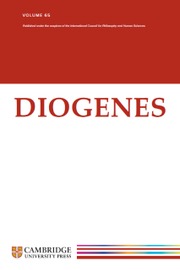No CrossRef data available.
Article contents
Four Billion Years of Evolution
Published online by Cambridge University Press: 02 April 2024
Extract
Core share and HTML view are not available for this content. However, as you have access to this content, a full PDF is available via the ‘Save PDF’ action button.
Palaeontology is an historical science comparable to prehistory, archeology, and history, in that it deals with living beings from past times. The documents needed to write the history of life are the remains of organisms contained in geological deposits from the last four billion years. They are called “fossils.”
- Type
- Research Article
- Information
- Copyright
- Copyright © 1991 Fédération Internationale des Sociétés de Philosophie / International Federation of Philosophical Societies (FISP)
References
Bibiliography
Aubouin, J., Brousse, R., Lehman, J.P., Précis de géologie, vol. 2, “Paléontologie, stratigraphie,” Paris, Dunod, 1978.Google Scholar
Kuhn-Schnyder, E., “Die Geschichte des Lebens auf der Erde,” Mitt. Paläont. Inst., No. 100, University of Zurich.Google Scholar
Pflug, H.D., Die Spur des Lebens: Paläontologie-chemisch betrachtet, Berlin, Springer Verlag, 1984.CrossRefGoogle Scholar
Pomerol, Ch., Stratigraphie et paléogéographie. Ere cénozoïque (tertiaire et quaternaire). —, Ere mésozoïque, 1974.Google Scholar
Pomerol, Ch., and Babin, Ch., Précambrien, ère paléozoïque, Paris, Doin Editeurs, 1977.Google Scholar
Schaarschmidt, F., Paläobotanik, vols. I and II, Mannheim and Zurich, J. Bibliograph. Institut, 1968.Google Scholar
Tobien, H., “Grenzen, Leistungen und Ziele paläontologischer Forschung,” Studium Generale, 5, Berlin, Springer Verlag, 1952, pp. 404–410.Google Scholar
Tobien, H., “Paläontologie, Tier - und Pflanzenwelt der Vorzeit,” Bildungsbuch der Büchergilde, Frankfurt, Büchergilde Gutenberg, 1962, pp. 451–484, fig. pp. 380–482.Google Scholar


